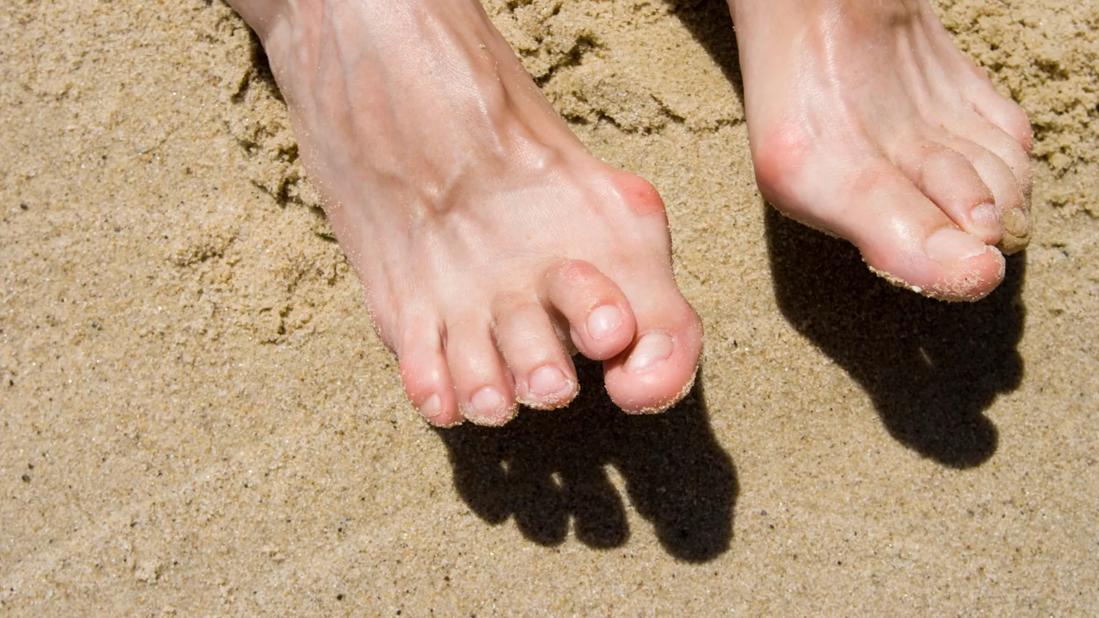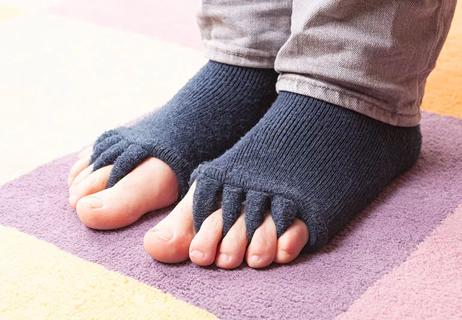Better shoes and exercises are great places to start

If the joint on one of your toes — usually the toe next to the big toe or the smallest toe — points upward rather than lying flat, you might have a hammertoe.
Advertisement
Cleveland Clinic is a non-profit academic medical center. Advertising on our site helps support our mission. We do not endorse non-Cleveland Clinic products or services. Policy
The condition happens when one of the toe muscles becomes weak and puts pressure on the toe’s tendons and joints. This pressure forces the toe to become misshapen and stick up at the joint. Also, there’s frequently a corn or callus on top of the deformed toe. This outgrowth can cause pain when it rubs against the shoe.
According to podiatrist Georgeanne Botek, DPM, surgery is the best way to permanently fix a hammertoe. The simple procedure straightens the toe, which makes shoes fit better. And your foot will look more attractive, as well.
But there are other fixes besides surgery. These include home remedies like:
If you don’t want to have surgery to fix your hammertoe, podiatrist Dina Stock, DPM, suggests using non-medicated padding along with proper shoes made with a wider and deeper toe box to accommodate your foot’s shape. “Ensuring your shoes have a good arch support can slow the progression of the condition as well,” she says.
The corn or callus that forms on top of the hammertoe can cause discomfort when you wear shoes. “Treat the corn by using a file or pumice stone to reduce its size after a warm bath, then apply emollients to keep the area softened and pliable,” suggests Dr. Botek. She also recommends using silicone or moleskin padding on top of the area when wearing shoes.
Advertisement
Dr. Botek says she gives her patients exercises for their toes to keep them supple and strengthen the muscles that move them. “Theoretically, exercises like extending, then curling the toes, splaying the toes, and moving the toes individually may help prevent the digital contracture that causes hammertoe,” she explains.
Try these suggestions and see what works best for you.
“The term, hammertoe, is commonly used as a general classification for any condition where the toe muscle weakens, causing digital contracture, and resulting in deformity,” explains Dr. Stock.
But she adds that a digital contracture like this can actually be a hammertoe, claw toe or mallet toe, depending on which joints in the toe are contracted.
Clawtoes are bent at the middle and end joints, while hammertoes are bent at the middle joint only. When it’s mallet toe, the joint at the end of the toe buckles. The skin near the toenail tip develops a painful corn that can eventually result in an ulcer.
Doctors further categorize all forms of hammertoe based on whether the affected toe is flexible, semi-rigid or rigid. The more rigid the toe, the more pain it will cause.
Your shoes, your genetic predisposition, an underlying medical condition or all of these can make you susceptible to developing one of these deformities of the toes.
Advertisement
Learn more about our editorial process.
Advertisement

Increasingly effective methods available when non-surgical methods don't help

Toe spacers and separators can add some comfort, but they’re not a fix-all

Understanding hammertoe, mallet toe and claw toe

Most recommended precautions center around minimizing bruising or swelling

Even one drink can have an impact on your cognitive function leading to slurred speech, blurred vision and impaired memory

Understand who may (and may not) benefit

Type 2 diabetes isn’t inevitable with these dietary changes

Applying a hot or cold compress can help with pain